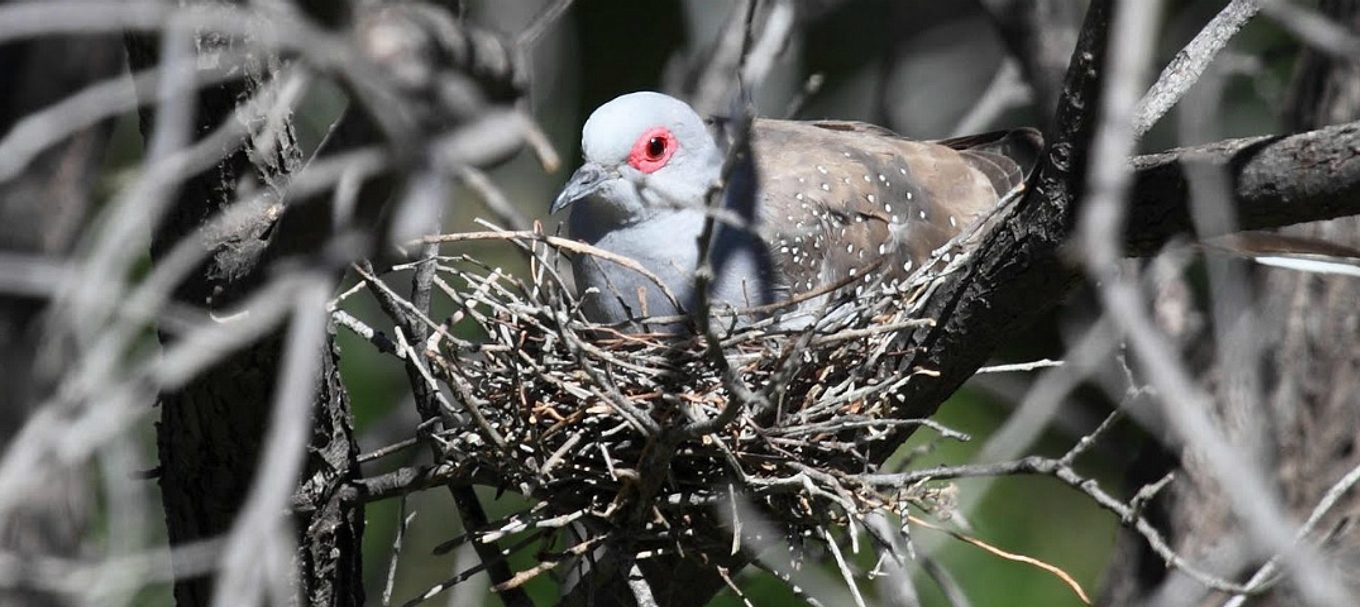
7 birds’ nests you can see in South Australia
Some birds work for weeks on their nests, while others throw together something that wouldn’t make the grade on Grand Designs.
From the salubrious to the spindly, here’s a selection of bird nests you might see in South Australia:
1. Willie wagtail
These busy black-and-white birds are found across the state. You’ll easily spot the sideways wagging of their tails.
Their nests are neatly woven cups of grass, covered with spiders’ webs on the outside and lined with soft grass, hair or fur. They’ve even been known to pluck hair from other animals to use on their nests.
They’ll also reuse a nest or pull it apart to use the material for a new one. Both parents incubate the eggs. Look for their nests on horizontal tree branches between August and February.
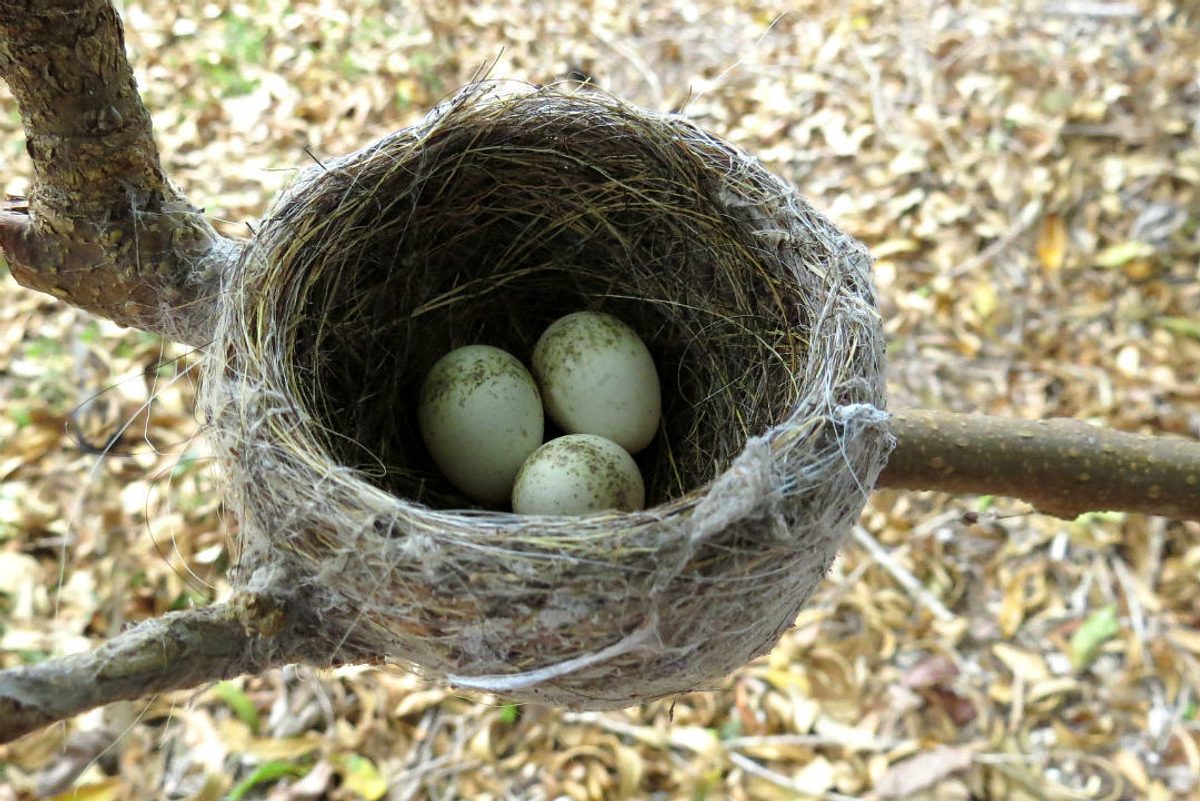
2. Little black cormorant
These black birds have a greenish sheen to the feathers on their backs. You’re most likely to see them near wetlands or sheltered coastal waters like the Coorong, where they can fish. You can also spot them along the River Torrens, both to the east and west of the city.
Their nests are messy platforms of sticks and debris in the fork of a tree, in a bush, or even on the ground. Eggs are laid in the warmer months and males and females share nest-building, incubation and feeding.
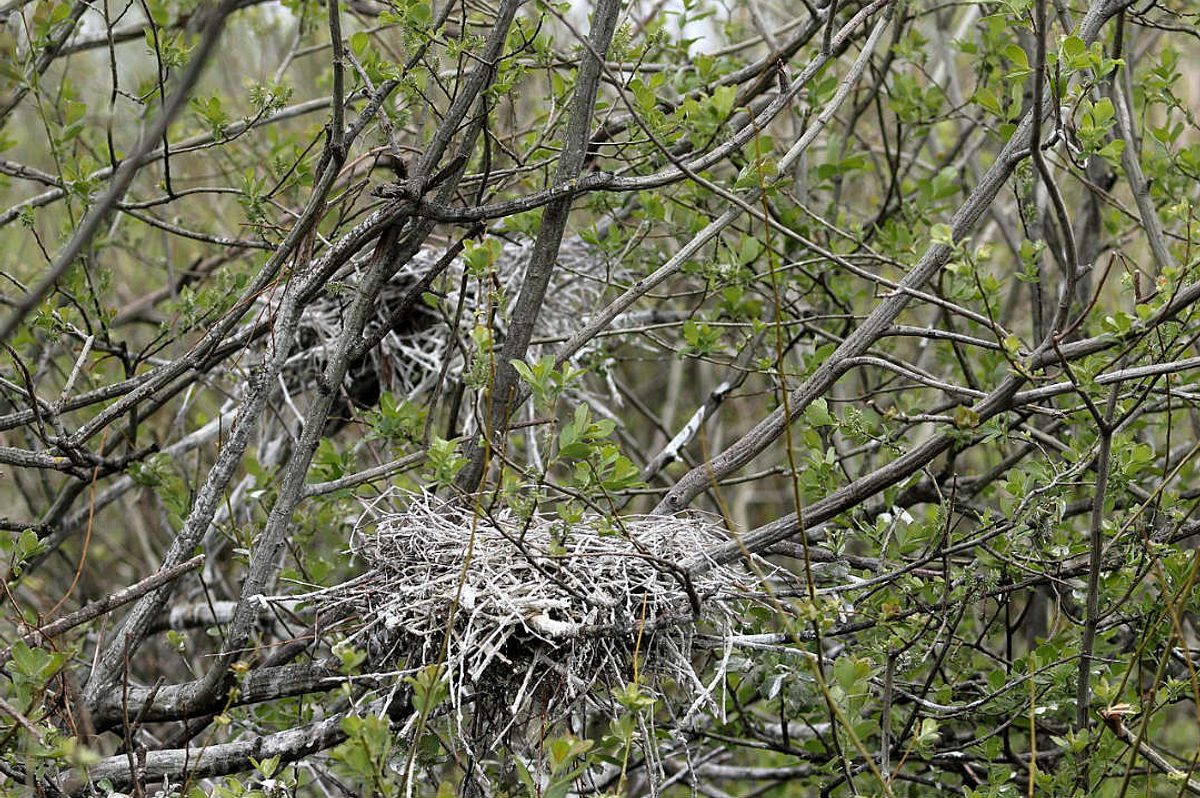
3. Grey butcherbird
These birds are relatively common in southern Australia, including suburban areas. Their name comes from their habit of hanging captured prey (lizards, insects and even small birds) in a tree and hacking pieces away with their hooked beak.
Their bowl-shaped nests are made of sticks and twigs and lined with grass or other soft fibres. They usually sit at least 10 meters off the ground. But beware – if you get too close to an occupied nest, a butcherbird parent might swoop and aim for your face. Nesting occurs from mid-year to late January.
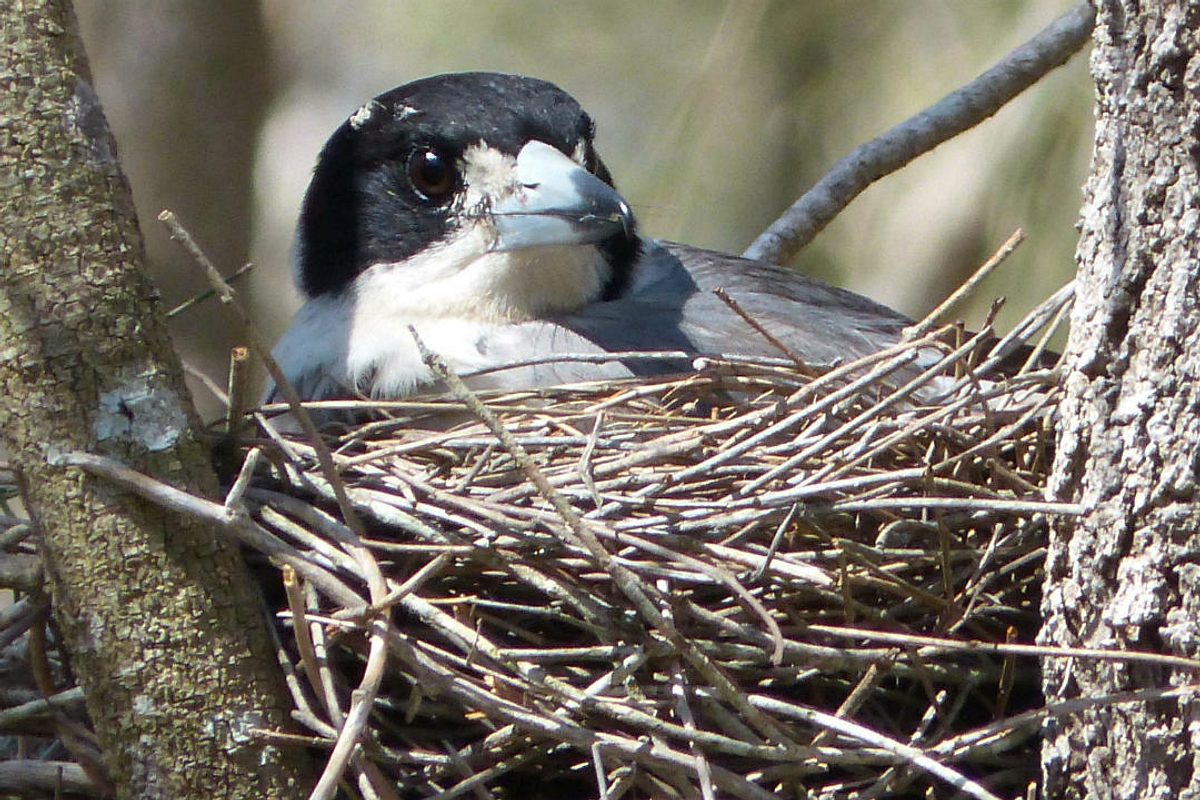
4. Noisy miner
The little bully of suburban backyards, the small but often aggressive native noisy miner will loudly defend its nesting territory from other birds. They will also harass family pets and even chase possums from nearby tree hollows.
The female makes the nest of twigs, grass and bark, sometimes wrapped with spiders’ webs and lined with grass, hair and soft plants. She incubates the eggs alone but rearing the young is an extended family affair. Breeding season is from July to December.
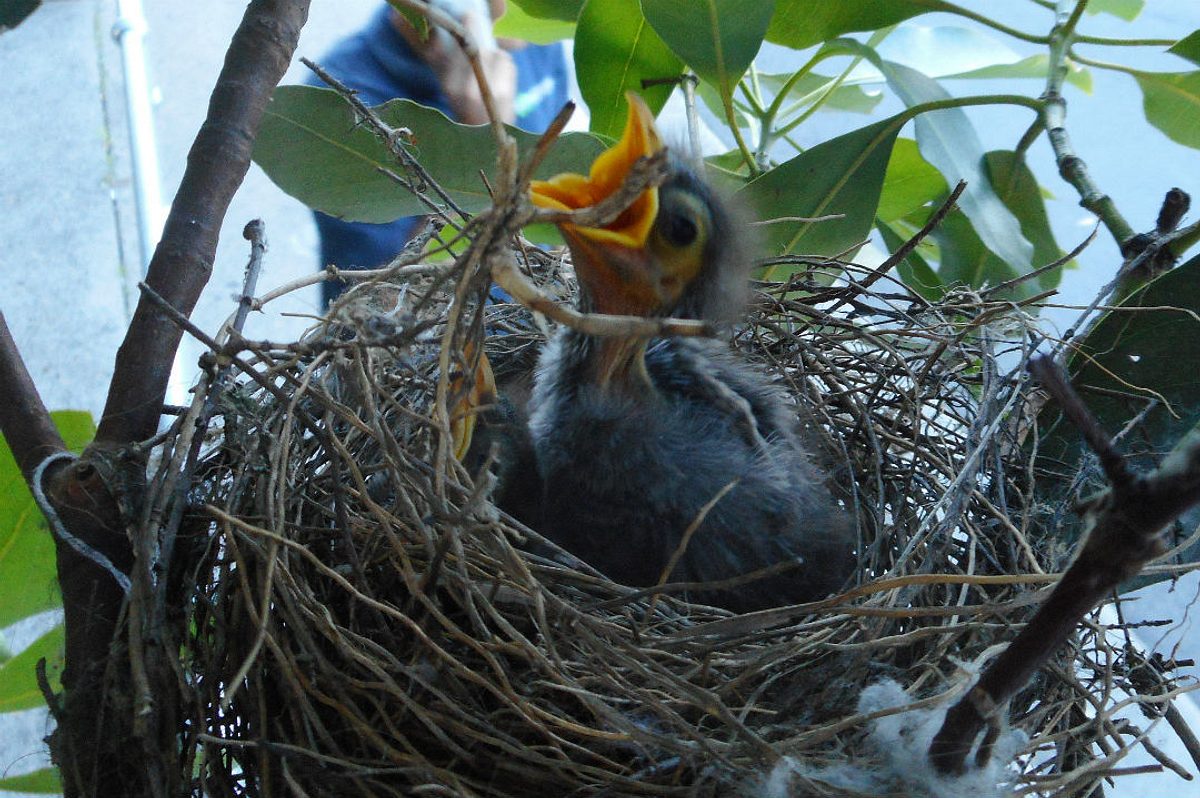
5. Diamond dove
This tiny bird is the smallest of Australia’s doves and has a distinctive red eye-ring.
It definitely won’t win any building awards – the nest is a small platform of fine twigs or even grass stems that can be so flimsy the eggs can sometimes be seen through the nest material.
Diamond doves will nest in trees or low shrubs. Both parents build the nest, incubate the eggs and feed the young. They can breed all year in most parts of the state if the weather’s good.
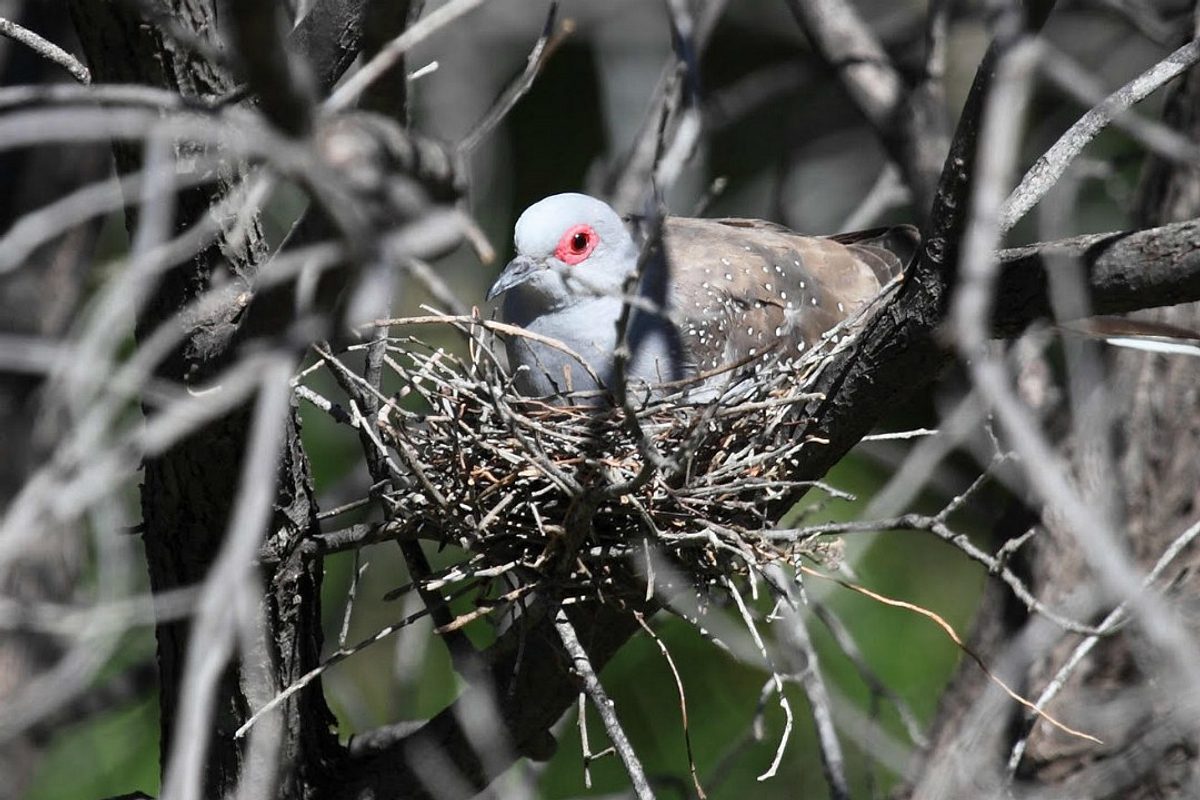
6. Common blackbird
This introduced bird is considered a pest by some, especially farmers and gardeners. You’ll know if you have them around because they’ll make a mess of your vegetable patch.
They build a cup-shaped nest of dried grass, bound with mud, and lined with fine grasses. It is usually placed in a tree, shrub or low bush, but they will also use tree hollows and have been known to use man-made structures like sheds. The common blackbird breeds in the warmer months.
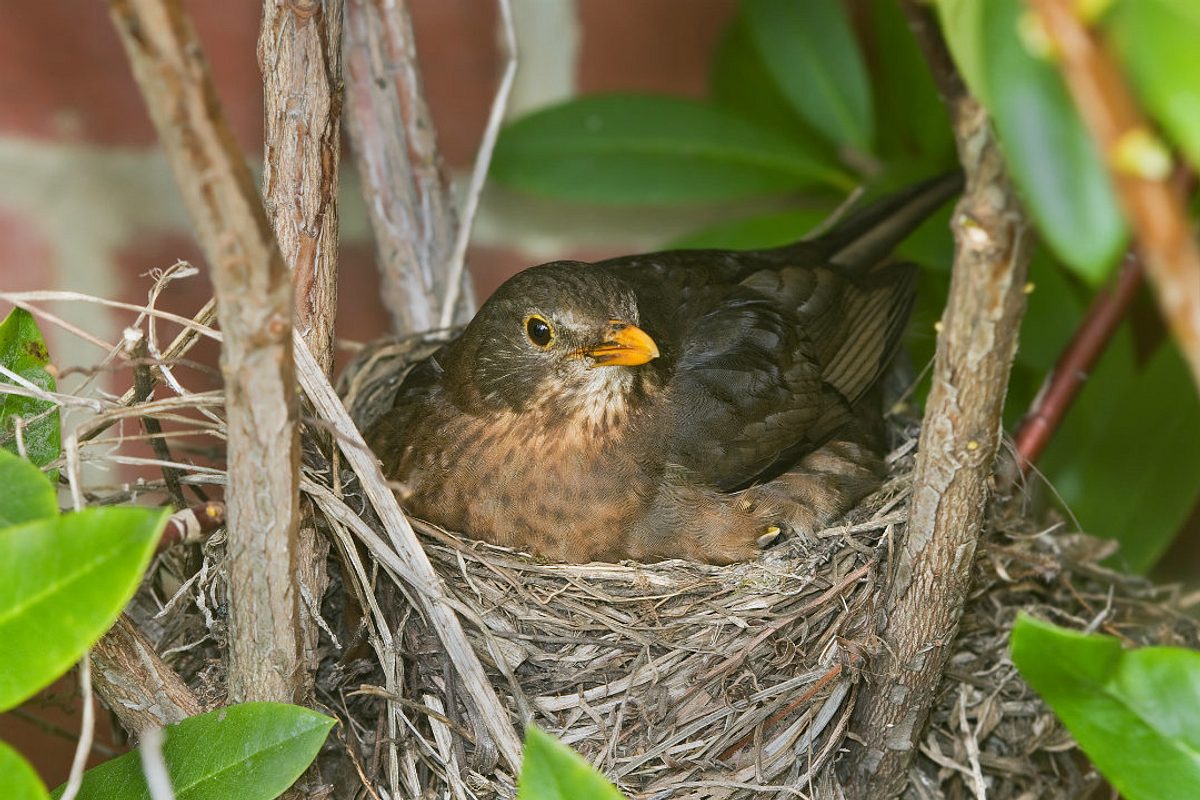
7. Fairy martin
This small bird is found across Australia and you’ve probably seen its quirky-looking nest somewhere.
The fairy martin builds a bottle-shaped nest from pellets of mud and clay that is packed closely together on the ceilings of caves and under bridges or similar structures. Breeding occurs from June to December.
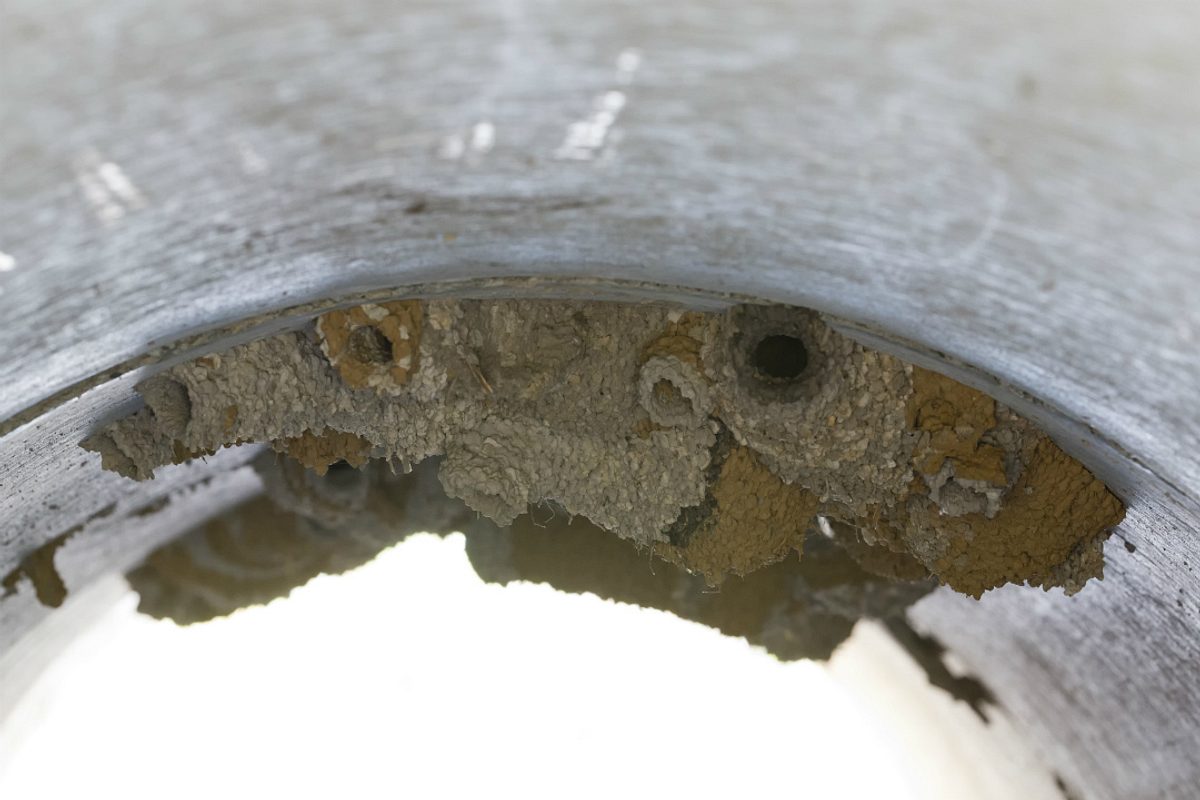
If you’re out and about and you manage to spot one of these nests, just make sure you don’t disturb the nest or surrounding vegetation when you’re trying to get a closer look.
Thanks to BirdLife Australia for helping with this story. If you’re looking to learn more about birds, check out our blogs: 7 tiny birds to look for in SA and 10 birds of prey to see in SA.
(Main imagecourtesy of Christopher Watson in line with Creative Commonslicensing)
This story was originally posted in September 2018.





